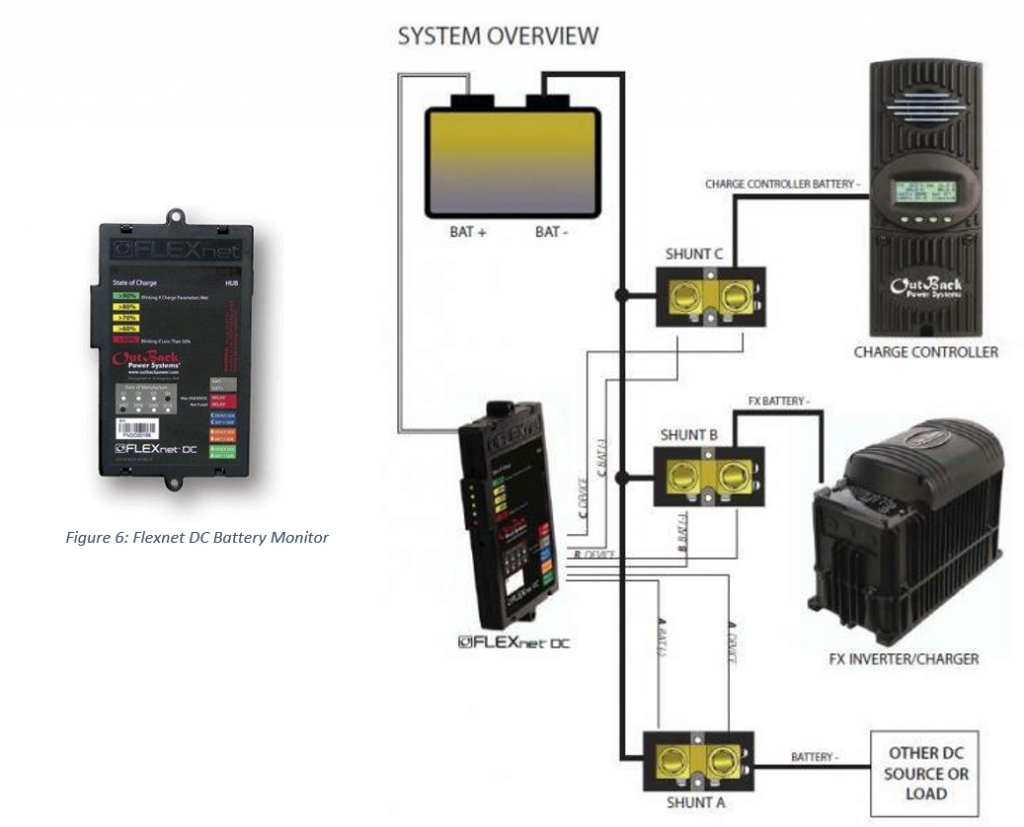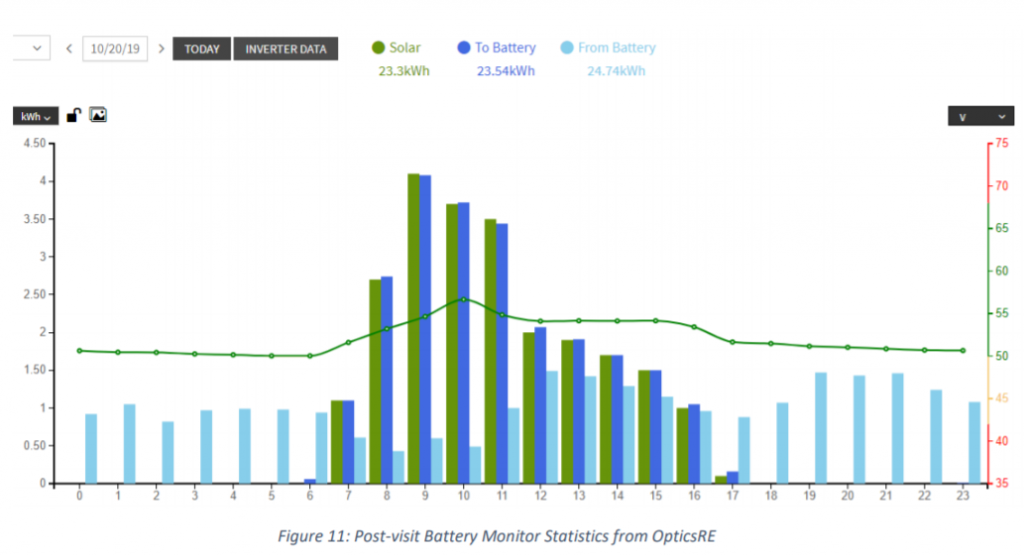BILQUIS MUSHAF HOSPITAL: RASHIDABAD SOLAR PROJECT
Visit report
VISIT DATE: 19TH OCTOBER 2019

OVERVIEW:
On 19th October 2019, the team of interns from Sawayra working at Bilquis Mushaf Hospital, Rashidabad visited the project site to trouble shoot some major issues arising to maintain the system’s reliability.
TEAM DETAILS:
ORIENT TEAM:
• Mr. Saad
• Mr. Liaquat
INTERNS:
• Areebuddin Ahmed (Group lead)
• Ayesha Sardar Siddiqui
• Khadija Tabbasum
• Naseer Ahmed Siddiqui
OBJECTIVES:
The two main objectives for the visit are listed below:
i. To resolve frequent tripping issue of Outback’s system and the event log alarms for high frequency and low voltage.
ii. To reinstall Flexnet DC battery monitor.
TRIPPING ISSUE OF OUTBACK’S SYSTEM:
PROBLEM STATEMENT:
Outback’s system suffers tripping quite often due to high frequency etc. A while ago Orient had to also replace the Ac input card which got damaged due to voltage and frequency fluctuations. During the Fronius inverter installation it was observed that as soon as the load was transferred from grid power to local generator, the outback system showed 216 VAC and 52.1 Hz and alarms regarding Ac input showed up.

PROPOSED SOLUTION:
The hospital does all its operations on generator as a policy so generator is turned on frequently each day. Thus, it was decided to switch the power source of inverter in a way that it doesn’t get power when generator is running. The Outback’s inverter was connected to a DB with WAPDA plus GENSET. The inverter took AC IN from grid supply and used to switch to generator in case of load shedding or operations. The team suggested to install a busbar DB, give it input from generator room and then its output to be connected to Outback and Fronius inverters as their AC inputs.

Later, it was decided to take out a cable from the AC/IN breaker of Fronius inverter and from input point of AC breaker take the cable to Input point of outback Ac breaker. So, the connections were made accordingly and this resulted in effective solution to system’s frequent tripping.

After installation it was noticed that despite alarms indicating high input frequency, the system didn’t face tripping issue. Instead the Event history on mate 3 showed the system is OK hence configured.


BATTERY MONITOR:
PROBLEM STATEMENT:
The battery monitor installed at Rashidabad has had been disconnected since 23rd November 2018 following its installation on 1st October,2018. Due to which real-time production by the DC source and precise monitoring of battery charging and discharging trends through OpticsRE was inaccessible. PROPOSED SOLUTION: The team installed the battery monitor to ensure the efficiency of system so that the battery cells may be protected from any damage.
BATTERY MONITOR INSTALLATION:

The connections for green colored Battery monitor’s 10 position wiring block were made as follows:
1: BAT
2: BAT+

5: C DEVICE SIDE
6: C BAT (-) SIDE
7: B DEVICE SIDE
8: B BAT (-) SIDE
• BAT+/- terminals of the device were connected to the respective terminals of battery bank.
• Ensured that all connections have proper polarity. • Shunt A has not been connected.
• Once the connections were made, the battery monitor was brought online for data logging successfully.
• Complete installation details and guidelines can be found here in the following link, http://outbackpower.com/downloads/documents/system_management/flexnet_dc/user_guide.pdf

OUTCOMES:
The Outback system’s tripping issue has thus been resolved and battery monitor is operational.




